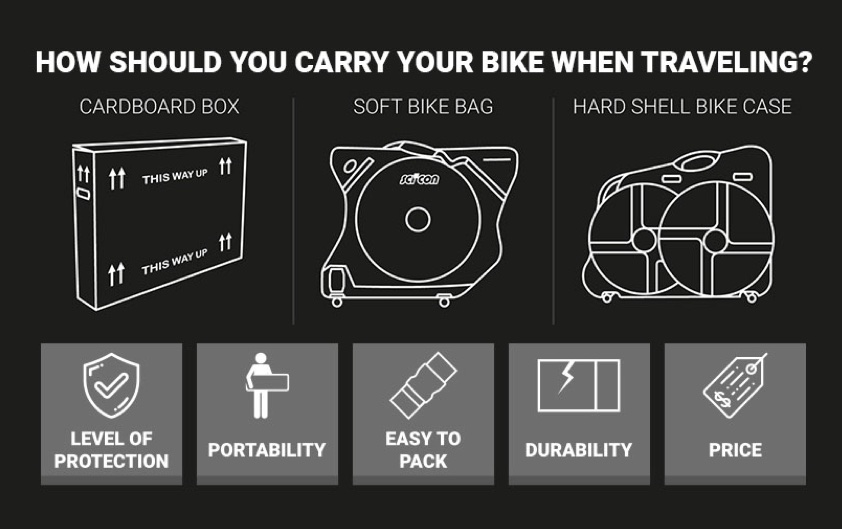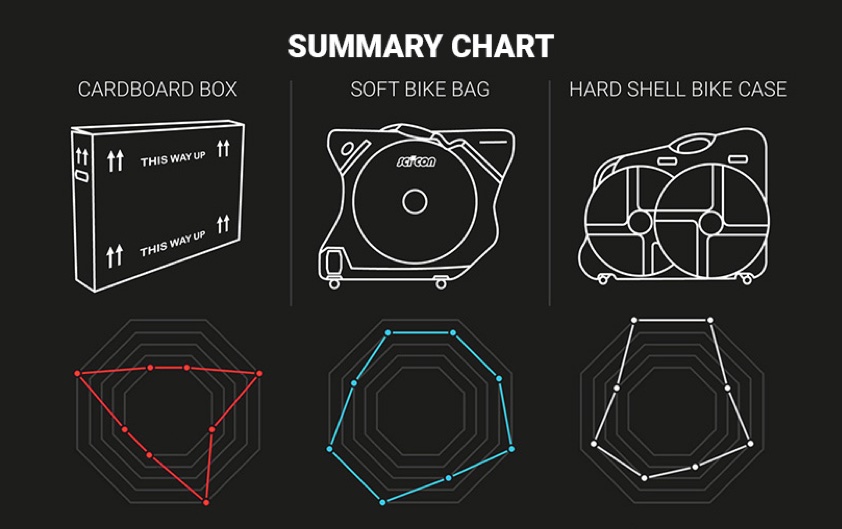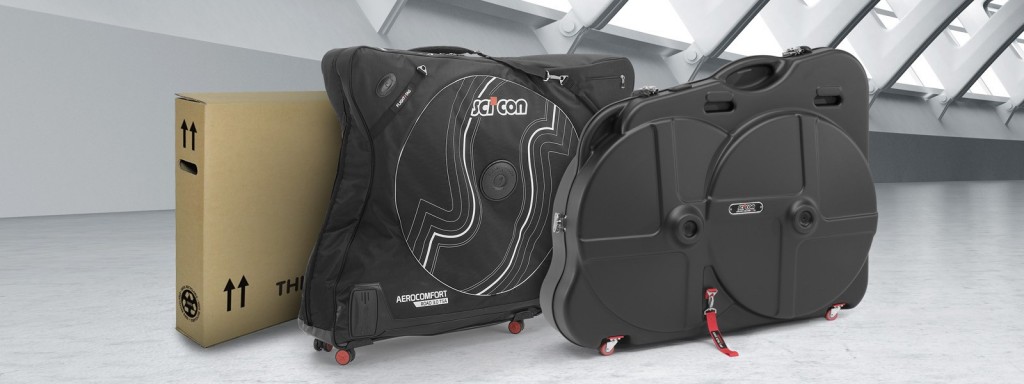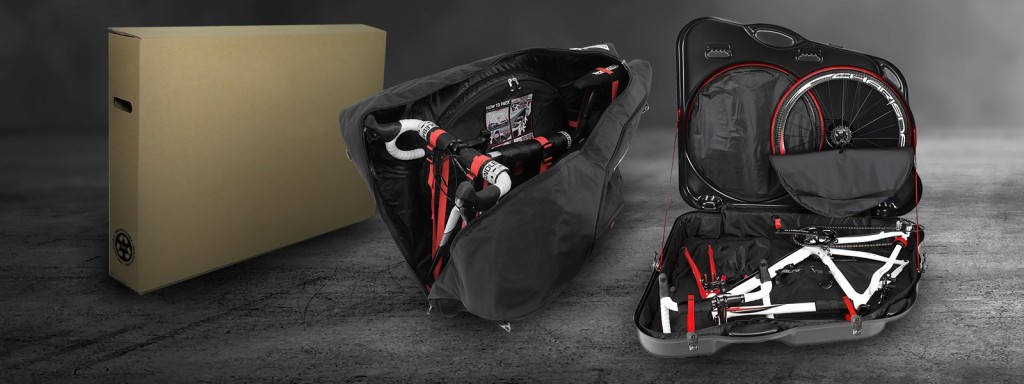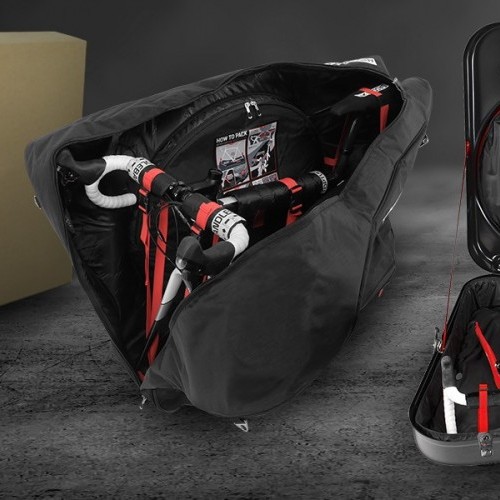
Bike Box or Bike Bag? Which Suits Your Travel Needs Better?
Features / Thu 9th Nov, 2017 @ 3:30 am
You could be an elite athlete or a weekend warrior, maybe you prefer riding on the roads, maybe on the mountain bike trails. You may travel internationally for racing commitments, or casually for the occasional training camp or holiday abroad. What is certain though is that when you do travel with your bike, you want to make sure it comes out the other side exactly how you packed it. So, we’ve done the hard work for you and compared your options when traveling with your bike.
Portability – How Easy Is It to Carry?
Unless you have the luxury of just putting your bike box or bike bag into your car and offloading at your destination, there will be some degree of carrying or pulling involved in your travel. So it’s important to know that firstly you can lift or carry your luggage on varied terrain, and also that its weight is not back-breaking.
Handles and Straps
The degree of manoeuvrability depends primarily on the handles your luggage has. A cardboard box at best has small hand holes on its sides, making this the hardest to move. The hard-shell box has an external strap to help lift it, as well as a specific handle on the top designed to fit your hand.
How Should You Carry Your Bike When Travelling?
A good soft-shell bike bag has the most straps, allowing different ways of moving your bike – the Scicon AeroComfort 3.0 for example has two fixed external handles to lift the bag, as well as a longer removable front strap and and shoulder belt to save your life when confronted by a flight of stairs.
Wheels
The ease of carrying your luggage depends on whether or not it has wheels too. This is where the soft-shell bag and hard-shell case again are favoured, having wheels while the cardboard box does not. A good bike box or bike bag has four 360° rotating wheels.
Weight
What if it’s too heavy? The weight of your luggage doesn’t only affect the manoeuvrability, but also a matter of cost.
Most airline companies impose weight restrictions, so having a lightweight case of say 10-12kg allows you to avoid additional fees. If a customs inspection is also sprung upon you, you’re assured that a good bike bag or box carries a TSA lock approved by the United States security authorities.
Storage Space Required
Finally, the room taken up by your luggage when stored may be an important factor if you’re limited for space at home or at your destination.
If you’re a bikepacking cyclist, a cardboard box may be your only option as you may discard it on arrival before finding another when returning – you don’t want to carry a box or bag on your bike too.
The soft-shell bag is the most user-friendly in this instance, as it can be folded and easily stored, under your bed or in a closet for example. The hard-shell case will need a dedicated space.
Is It Easy to Pack & How Long Does It Take?
It’s an important feature to consider as you don’t want to spend hours each time you pack or unpack your steed. It’s usually dictated by how much disassembly is required for it to fit. Then you also need to take into account your mechanical skills in this too – if you can’t reassemble your bike on your own, you can’t ride it.
The Scicon AeroComfort 3.0 TSA bike travel bags for example take around 5 minutes to pack, while the AeroTech Evolution 3.0 TSA hard shell bike box takes around 10 minutes to pack.
How to pack your bike before traveling by plane
The first vital step is removing your wheels, for any of the three luggage options. From here the level of disassembly depends on the box or bag.
A good soft-shell bag only requires you to remove the wheels with a road or triathlon / TT bike. With a mountain bike you usually also need to loosen and turn the handlebars to the side. All other parts – pedals, bars (road), aerobars (triathlon), rear derailleur, quick releases and saddle – remain in place. A soft-shell bag can be designed around the geometry of a bike, paired with an internal structure to hold the bike in place.
A hard-shell bike box requires you to remove only one pedal and turn the bars to the side. In most cases you will also need to remove the saddle, but depending on the size of the bike an integrated seatpost can also be compatible.
Needless to say, packing your bike into a cardboard box requires a lot more disassembly of parts and components, together with further padding and packing of these to avoid damage from moving parts. The size of your bike will dictate whether you need to remove the seatpost or not. So, in this case some mechanical skills are required, as well as the tools to do this – allen keys, pedal spanner, tape and bubble wrap, and further padding. We recommend packing pedals and quick releases in your personal luggage.
How much do they cost?
The price of a cardboard box is minimal, maybe free from your local bike shop. There are specially designed ones that cost around 15€, but its life-span is limited.
The cost increases with a bike bag or bike box. For a good quality soft-shell bag, made with a tough outer material, comes at a premium, with a hard-shell case at additional cost.
Which is the best option for you?
Cardboard Box – Good if you travel once a year on a long bike trip, and you’re on a budget with the time and ability to disassemble and reassemble your bike either end. If you didn’t spend a lot for your bike and are aware that you have the least secure bike luggage option when it comes to potential damage.
Soft-Shell Bike Bag – Good if you’re a frequent flyer and have limited time or ability for disassembling your bike. The best option for a lightweight bag that’s easy to pack and to carry when travelling by plane, train or car. Good for those after a high level of protection who are willing to pay for this protection.
Hard-Shell Bike Box – Suitable for frequent flyers who want the safest option for flying with your bike, for those who have room to store a bike box, and who are willing to spend a higher price for a box that provides added protection and avoids additional airline fees.
View the full range of Scicon Bags here.
By IMB

